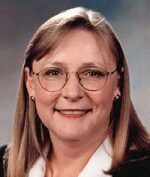When I joined the petroleum industry almost 40 years ago, integration of the various aspects of our work seemed like something out of a science-fiction movie. As an industry, we have come a long way. More than half of the roughly 120 abstracts of papers presented this year in the category of reserves and asset management addressed integration in some fashion. Mercifully, advances in recording instruments and computers have released the handcuffs of limited data and cumbersome calculations. I fear the handcuffs may have been replaced by data overload, but I will leave that discussion for my colleagues who present the information-management section in this magazine.
One popular theme was something we sometimes lose sight of: how to integrate investments and production into portfolios without destroying value. Both technical and planning advances have been addressed at length in the presentations from which the papers summarized and those recommended for additional reading were selected.
Optimization was also a very popular topic among the papers I reviewed. With the current emphasis on the development of unconventional properties, both the technical and economic optimization of well spacing and stimulation techniques was addressed in numerous papers. Several authors used different approaches, but most came to the same conclusion: The balance between net present value and overdrilling or fracturing to maintain rate is a tricky one.
In addition to the highly technical discussions, there were several papers addressing the maturing regulatory environment. Because the Modernized SEC Rules, Canada’s NI-51, and the SPE Guidelines for Application for Petroleum Resources Management System have been around for several years now, there were numerous papers on the handling of specific situations within those regulations. Resource estimation and reporting continue to be topics of much interest, specifically in unconventional reservoirs.
I always enjoy reviewing papers for this section. When I sat back to reflect on what would be the most useful information to present, it occurred to me that the theme of growth and maturity was reflected in almost all of the papers. Our understanding of how to estimate unconventional reserves and resources properly has definitely grown over the last few years. Our realization that we should not look at any individual aspect of our business such as drilling or production without considering its place in the project life cycle, including its economics, reflects a maturity within the industry, as does learning how to reflect our assets effectively in a changing regulatory environment. It is satisfying to see the depth and strength of the advances in our industry, no longer the stuff of science fiction.
This Month's Technical Papers
A Case Study of Integrated Asset Modeling for Gas Fields Sharing Production Facilities
Effects of Infill- and Offset-Drilling Patterns on Field Development for Shale Wells
Economic Optimization of Horizontal-Well Completions in Unconventional Reservoirs
Firm Sees Value After 5 Years of Using the Petroleum Resources Management System
Additional Reading
SPE 170616 Interpretation of Recent SEC Reserves-Reporting Guidelines by Enrique Morales, SGS Horizon, et al.
SPE 169984 Optimized Shale-Resource Development: Balance Between Technology and Economic Considerations by U. Ahmed, Baker Hughes
SPE 169564 Estimation of Stimulated Reservoir Volume Using the Concept of Shale Capacity and Its Validation With Microseismic and Well Performance: Application to the Marcellus and Haynesville by A. Ouenes, Sigma Cubed, et al.
SPE 170681 Integrating Unconventional-Resource Opportunities Into an Exploration-and-Production Portfolio by Larry Chorn, Halliburton, et al.

Delores James Hinkle, SPE, retired in 2013 from Marathon Oil after 38 years in the oil and gas industry. Most recently, she served as director of corporate reserves for Marathon, where she worked for 28 years. Other industry experience includes positions at Arco and Sun. Hinkle holds a BS degree in petroleum engineering from the University of Missouri-Rolla and an MBA degree from the University of Alaska, Anchorage. She received the 2014 SPE Gulf Coast Section Reservoir Description and Dynamics Award. Hinkle is past chairperson of the SPE Oil and Gas Reserves Committee, where her responsibilities included serving as the cochairperson of the Bureau of the United Nations Group of Experts for the development of a classification framework for mineral commodities. She is a member of the JPT Editorial Committee and a former member of the SPE Annual Meeting Management Subcommittee.
